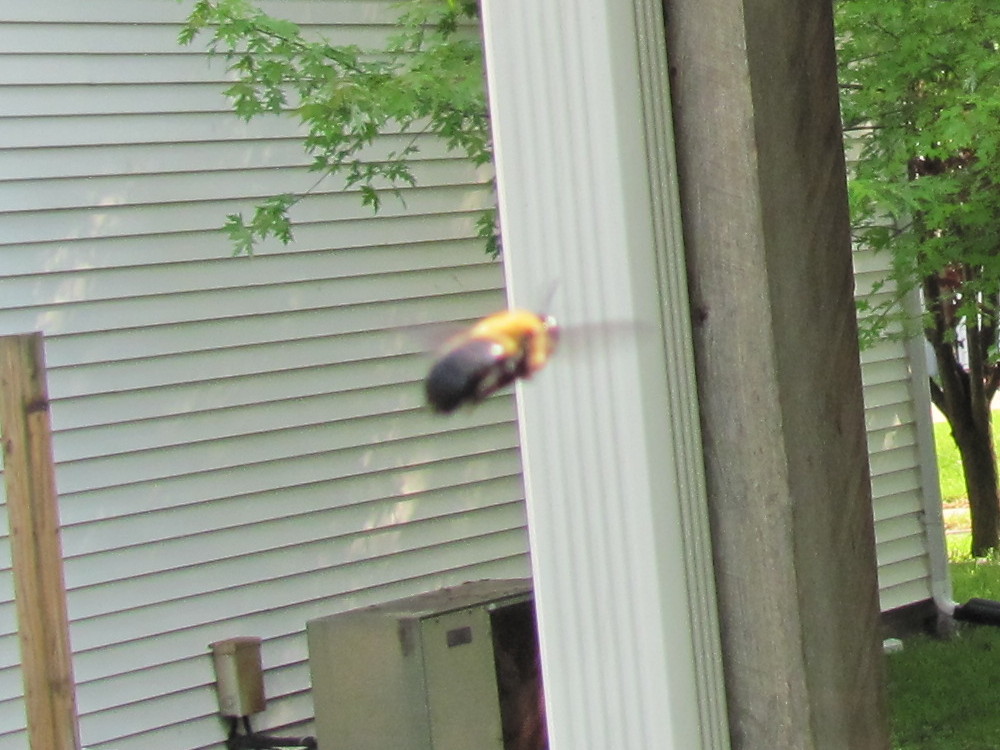Carpenter bees(Wood Bees)




Advantage Pest Control Solutions has the answer to your Carpenter Bee problem. We offer fast, affordable, and guaranteed Carpenter Bee Control.
Carpenter bees often cause damage to property by burrowing into exposed wood and are a nuisance because they frighten people and can sting. A treatment for carpenter bees involves treating the individual burrows to kill the female bees and sealing the openings to prevent moisture from getting inside and to deter bees from re-infesting the old burrows.
Carpenter bee control starts at $162.00 and comes with a 6 month guarantee. See Rates for current prices.
Carpenter bees or wood bees are large black and yellow bees that infest wood fascia, decks, trees, branches, and other wood outdoors. Although stings are rare, their sheer size and erratic hovering while guarding their nest entrances can be a disturbing and scary experience. The bees seen guarding the nest entrance are stingerless males. Carpenter bees are large black and yellow bees with a hairless shiny black abdomen and large stinger on females.
Carpenter bees do not eat wood but bore dime sized holes in outdoor wood surfaces for a few inches then make a 90 degree turn and bore along the grain for up to several feet, laying eggs in cells along their tunnels and can cause significant damage if left untreated. Damage can also occur as woodpeckers hunt for carpenter bee larvae. Adult Carpenter bees spend the winter dormant in their nest and usually emerge during late spring. The bees then collect pollen for food which they line the tunnels with for their soon to be hatched young. Eggs hatch in late summer and early autumn. Their boring also leaves unsightly yellow stains of chewed wood pulp outside their entrance holes.
Carpenter bees or wood bees can cause damage to wood through their boring activity. Unprotected wood such as unpainted decks, porches, trim boards, and fascia boards are prime targets for carpenter bee damage and wood bees will reuse tunnels left by other bees year after year. Besides the direct damage caused by carpenter bees, woodpeckers will often damage wood looking for wood bee larvae. Although unpainted wood is preferred, painted or stained wood can also be attacked, particularly if there are unprotected parts of the wood such as nail holes.
Carpenter Bees are often confused with bumblebees as they are a similar size and have similar coloration, but they can be distinguished by their appearance and behavior. Carpenter Bees have a shiny abdomen when compared to the bumblebee's hairy abdomen. Carpenter Bees can be seen hovering around wooden structures and are solitary bees, while bumblebees nest in the ground and are social insects.
Carpenter Bee infestation can also cause damage to your home in other ways. Woodpeckers will often damage decks and facia while trrying to feed on the carpenter bee larvae. The nests of the carpenter bees can be up to 4 feet long exposing the inside of the wood to moisture.
Carpenter bee control is achieved by directly treating nests and attractive nesting sites, adjoining wood surfaces, and plugging nest entrances to reduce moisture damage to wood and re-infestation.





